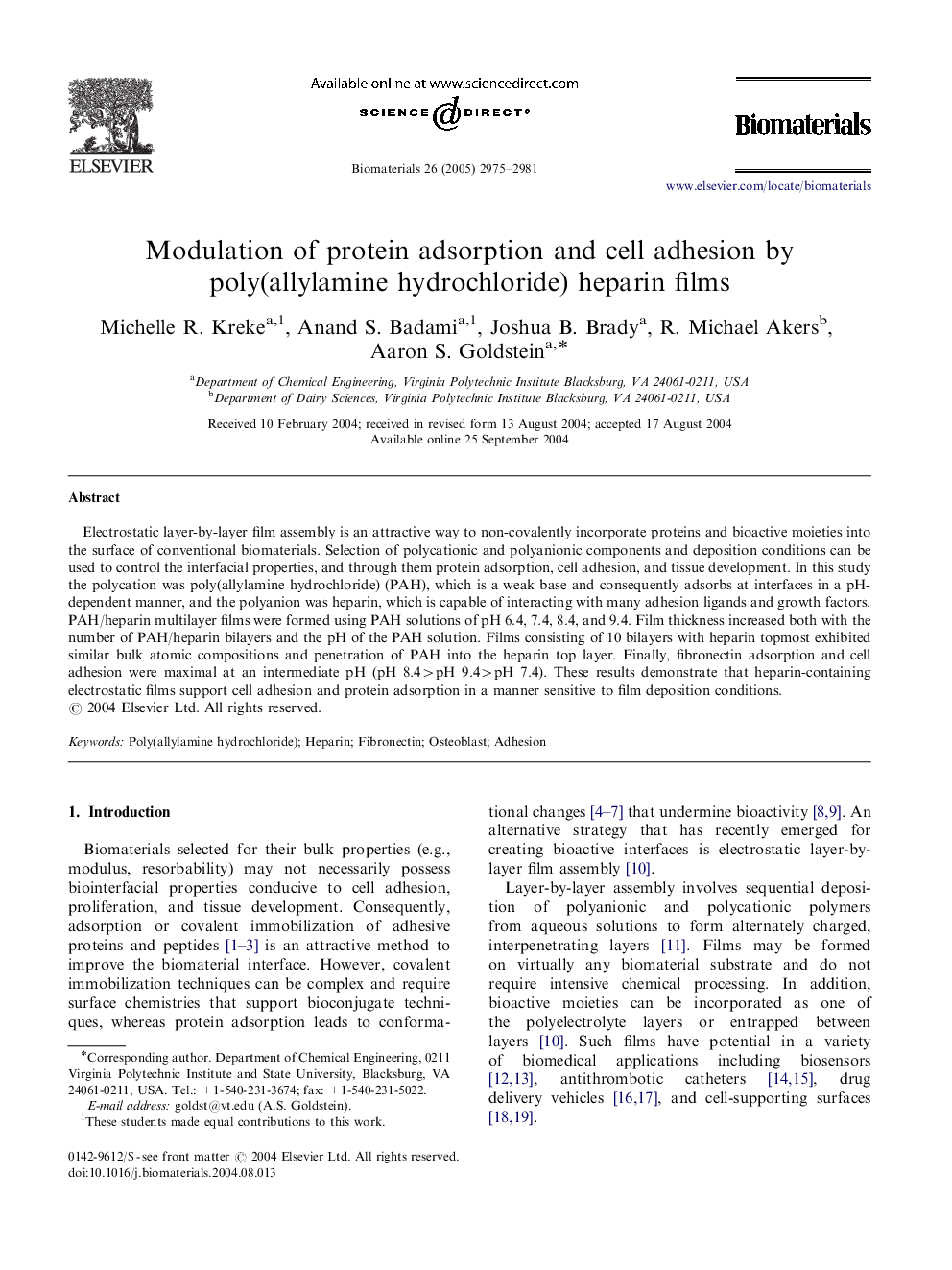| کد مقاله | کد نشریه | سال انتشار | مقاله انگلیسی | نسخه تمام متن |
|---|---|---|---|---|
| 12246 | 786 | 2005 | 7 صفحه PDF | دانلود رایگان |

Electrostatic layer-by-layer film assembly is an attractive way to non-covalently incorporate proteins and bioactive moieties into the surface of conventional biomaterials. Selection of polycationic and polyanionic components and deposition conditions can be used to control the interfacial properties, and through them protein adsorption, cell adhesion, and tissue development. In this study the polycation was poly(allylamine hydrochloride) (PAH), which is a weak base and consequently adsorbs at interfaces in a pH-dependent manner, and the polyanion was heparin, which is capable of interacting with many adhesion ligands and growth factors. PAH/heparin multilayer films were formed using PAH solutions of pH 6.4, 7.4, 8.4, and 9.4. Film thickness increased both with the number of PAH/heparin bilayers and the pH of the PAH solution. Films consisting of 10 bilayers with heparin topmost exhibited similar bulk atomic compositions and penetration of PAH into the heparin top layer. Finally, fibronectin adsorption and cell adhesion were maximal at an intermediate pH (pH 8.4>pH 9.4>pH 7.4). These results demonstrate that heparin-containing electrostatic films support cell adhesion and protein adsorption in a manner sensitive to film deposition conditions.
Journal: Biomaterials - Volume 26, Issue 16, June 2005, Pages 2975–2981